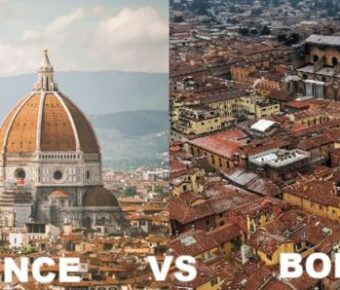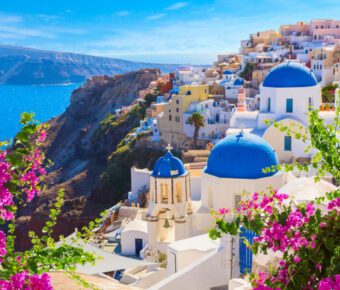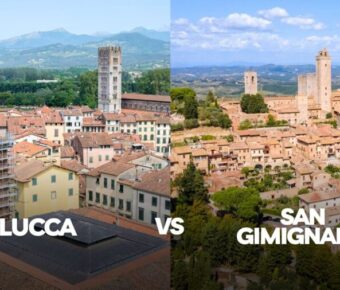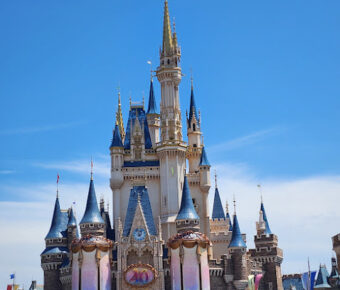
Positano vs Capri: Which Enchanting Italian Coast Gem is Your Perfect Match?
Nestled along Italy’s stunning Amalfi Coast, Positano and Capri each offer a distinct flavor of Mediterranean magic. These two gems attract travelers seeking pristine beaches, dramatic cliffs, and that perfect Italian summer getaway. While Positano charms visitors with its romantic, bohemian atmosphere and larger beach area, Capri dazzles with its upscale elegance and exclusive luxury shops.
Both destinations sit just 15 nautical miles apart, yet each brings its own unique character to the table. Positano’s colorful houses cascade down the cliffside to a central beach, creating those postcard-perfect views that made the Amalfi Coast famous. Capri rises from the sea like a rocky crown, with two smaller beaches and ancient Roman ruins adding to its allure.
Choosing between these coastal paradises comes down to travel style. Positano draws those seeking a more laid-back vibe with its beach clubs and family-run restaurants. Capri appeals to luxury travelers who want designer boutiques and celebrity spotting. Both offer unforgettable nightlife, from shoreline clubs to sophisticated lounges.
Contents
- Geographical Orientation and Accessibility
- Capri Island Landscape
- Positano Coastal Town
- Transportation Options
- Historical Significance and Culture
- Historical Landmarks of Capri
- Positano’s Artistic Heritage
- Natural Attractions and Activities
- Capri’s Natural Wonders
- Beaches and Nature in Positano
- Outdoor Adventures
- Accommodations and Hospitality
- Luxury Stays and Services
- Boutique Hotels and Local Charm
- Budget-Friendly Options
- Culinary Delights and Dining Experiences
- Capri’s Famous Restaurants
- Positano’s Food Scene
- Shopping and Leisure
- Exclusive Boutiques in Capri
- Positano’s Bohemian Shops
- Nightlife and Entertainment
- Glamorous Nights in Capri
- Positano’s Evening Charm
- Frequently Asked Questions
- What are the key differences between visiting Positano and Capri for a day trip?
- Which location offers a more authentic experience for travelers seeking hidden gems, Positano or Capri?
- Can Positano and Capri both be thoroughly enjoyed during a single day excursion?
- What unique attractions should one prioritize when deciding between a visit to Positano or Capri?
- How do the culinary experiences in Positano compare with those available in Capri for food enthusiasts?
- What travel considerations should visitors with limited mobility take into account when choosing between Positano and Capri?
- More Travel Guides
Geographical Orientation and Accessibility
The distinct locations of Capri and Positano create unique experiences. Capri sits as an island paradise in the Tyrrhenian Sea, while Positano clings to the dramatic cliffs of the Amalfi Coast.
Capri Island Landscape
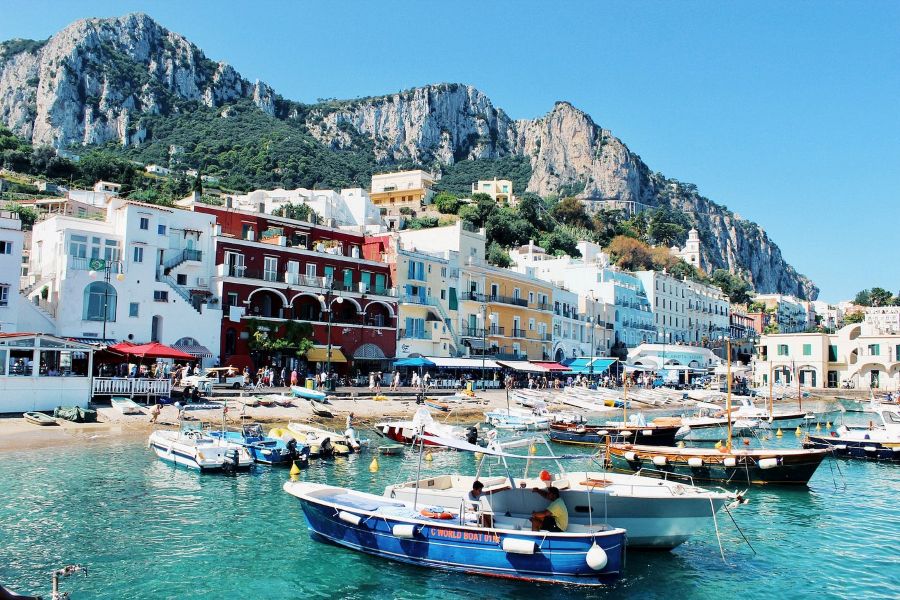
Capri spreads across 10 square kilometers, split between two main towns – Capri and Anacapri. The terrain rises sharply from Marina Grande, the main port, up toward Mount Solaro’s peak. Only four roads connect the different parts of the island.
Marina Grande buzzes with boats and visitors as the island’s gateway. From there, steep paths and winding roads lead to the town center.
The island’s compact size makes it easy to explore on foot, though the elevation changes can be challenging.
Positano Coastal Town
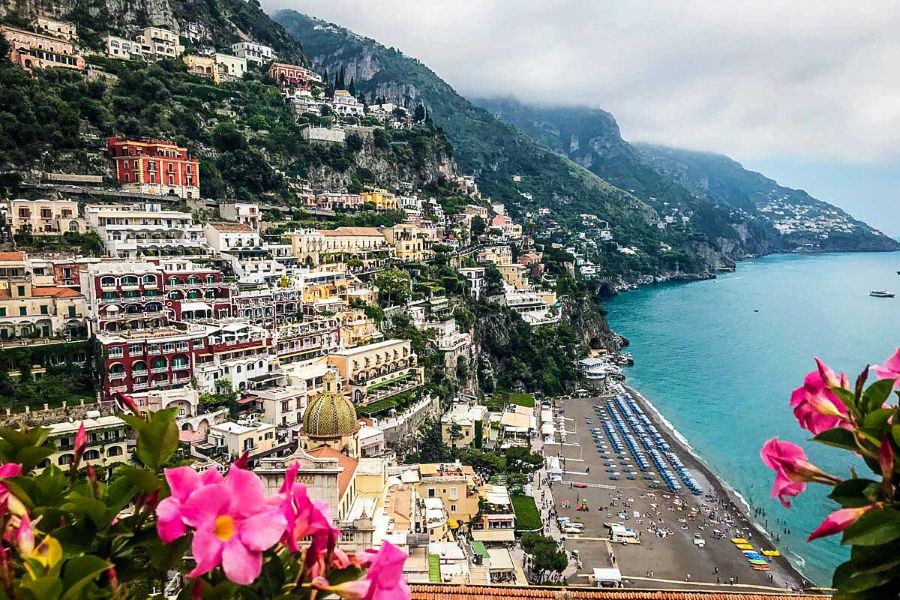
Positano stretches vertically along the Amalfi Coast’s cliffs in Campania. Its colorful buildings cascade down the mountainside like a vibrant waterfall.
The town’s vertical layout means lots of stairs – about 400 steps separate the upper and lower parts of town. The beach sits at the bottom, while shops and restaurants line the steep paths.
The unique geography creates amazing views but requires good walking shoes and stamina to navigate.
Transportation Options
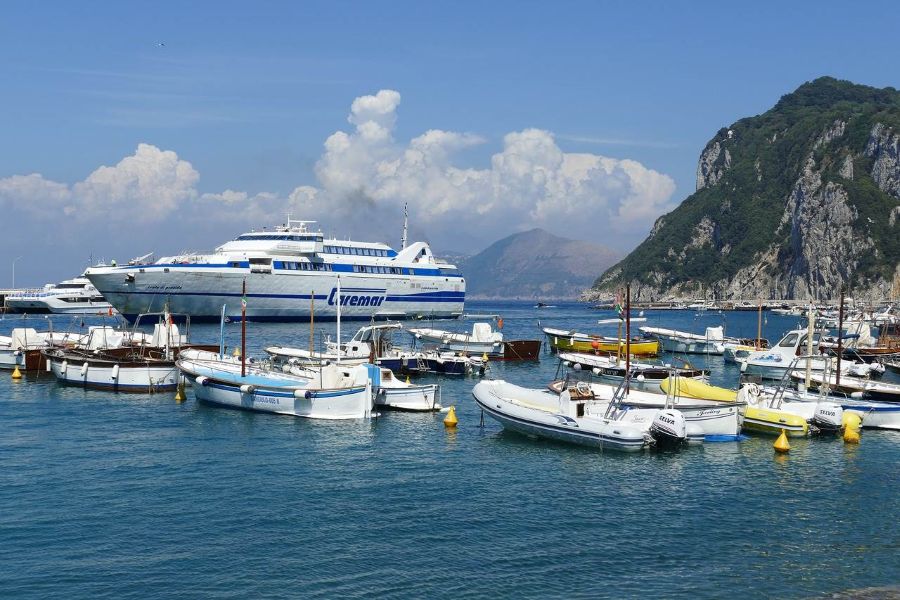
You can get to Positano by land or sea. Visitors can take buses or private transfers from Naples Airport or search flights and transport options to plan their journey.
Capri requires a boat trip – ferries run regularly from Naples, Sorrento, and Positano. The journey takes 20-30 minutes from Positano.
On Capri, local buses connect major spots. Many areas are pedestrian-only. Positano relies on buses and walking paths, with no cars allowed in the town center during peak season.
Water taxis serve both locations, offering scenic routes between coastal points.
Historical Significance and Culture
Both Capri and Positano hold rich histories dating back thousands of years, with each location telling unique stories through their preserved landmarks and artistic traditions. These coastal gems showcase Italy’s cultural legacy in distinct ways.
Historical Landmarks of Capri
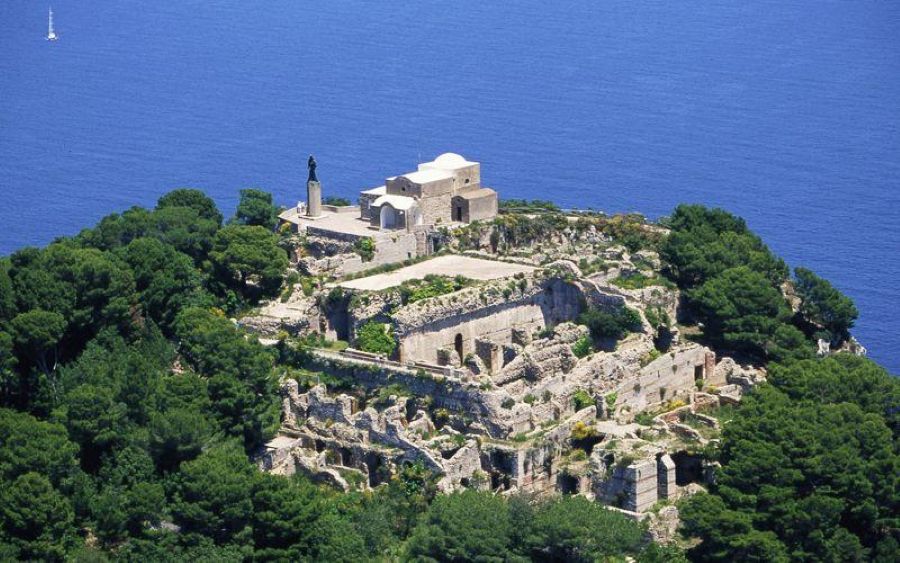
The island’s most famous resident was Emperor Tiberius, who ruled the Roman Empire from Capri between 27-37 AD. His grand Villa Jovis sits perched on the island’s eastern edge, offering a glimpse into ancient Roman luxury. The ruins stretch across 7,000 square meters.
The historic center of Capri town features a mix of Roman and medieval architecture. Ancient Roman statues and artifacts fill the local museums, telling stories of the island’s imperial past.
You’ll spot traces of different civilizations across Capri – from Greek settlers to Roman emperors to medieval monks. Each left their mark on the island’s architecture and culture.
Positano’s Artistic Heritage
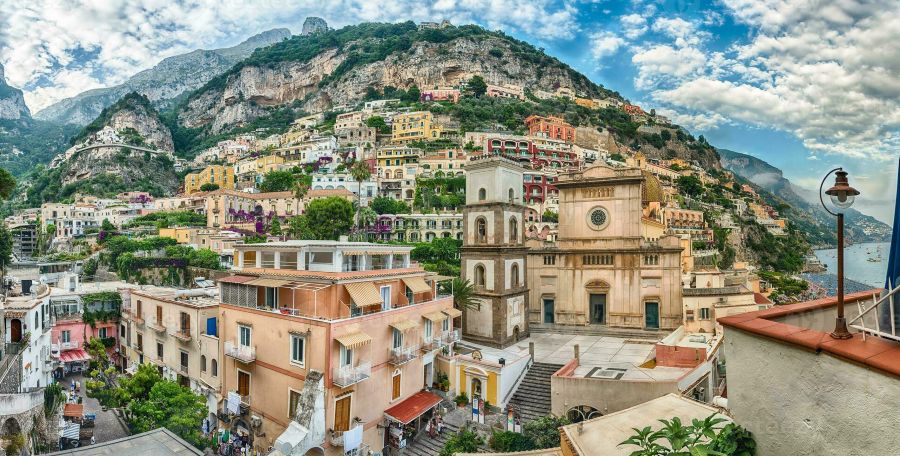
The Church of Santa Maria Assunta stands as Positano’s crown jewel, built by Benedictine monks in the 10th century. Its dome, covered in colorful majolica tiles, has become an iconic symbol of the town.
The town’s name comes from an ancient legend about a Byzantine icon of the Virgin Mary. Local artists and craftsmen have kept traditional skills alive through generations.
Positano gained fame in the 20th century as an artists’ haven. Writers, painters, and musicians found inspiration in its dramatic scenery and laid-back lifestyle. The town’s signature “moda Positano” fashion style emerged from this creative atmosphere.
Natural Attractions and Activities
Both destinations enchant visitors with dramatic coastal landscapes and stunning natural beauty. Each location offers unique ways to experience the Mediterranean’s crystal-clear waters and rugged cliffs.
Capri’s Natural Wonders
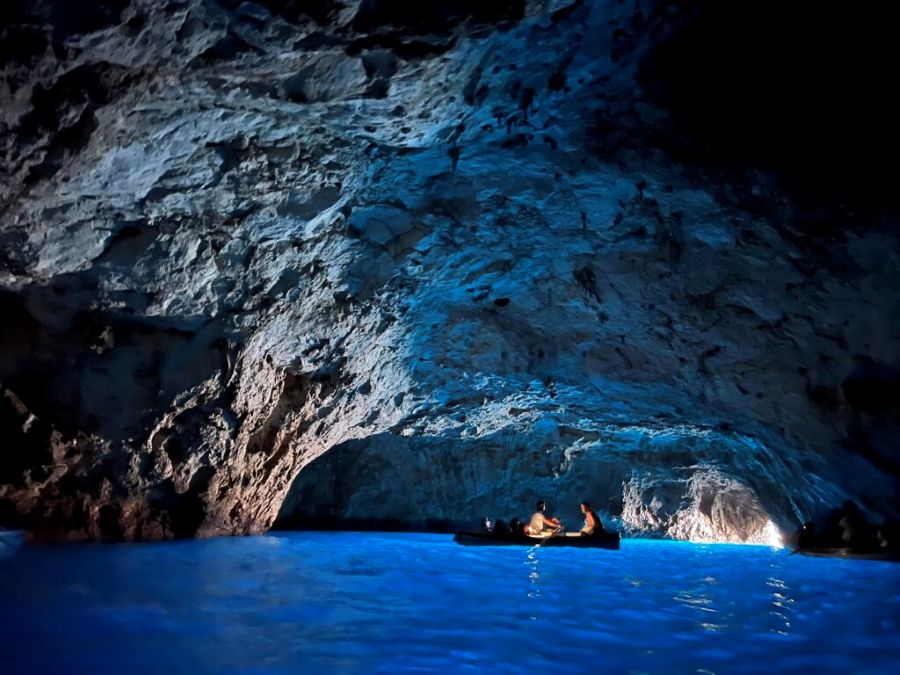
The legendary Blue Grotto tours reveal a magical sea cave where sunlight creates an ethereal blue glow. This natural wonder draws visitors from around the world.
The iconic Faraglioni rocks rise majestically from the sea. These three limestone stacks stand guard off Capri’s southern coast, creating perfect photo opportunities.
The Gardens of Augustus provide spectacular views of the Faraglioni and Marina Piccola. These terraced gardens showcase native Mediterranean plants and flowers against the backdrop of the sea.
Beaches and Nature in Positano

Spiaggia Grande, the main beach, stretches along the town center with its signature black and gray pebbles. The colorful umbrellas and clear waters make it a prime spot for swimming and sunbathing.
Fornillo Beach offers a quieter alternative just a short walk from town. Its sheltered position makes it perfect for families and those seeking peaceful relaxation.
Hidden coves dot the coastline, accessible only by boat. These secluded spots provide intimate encounters with nature away from crowds.
Outdoor Adventures
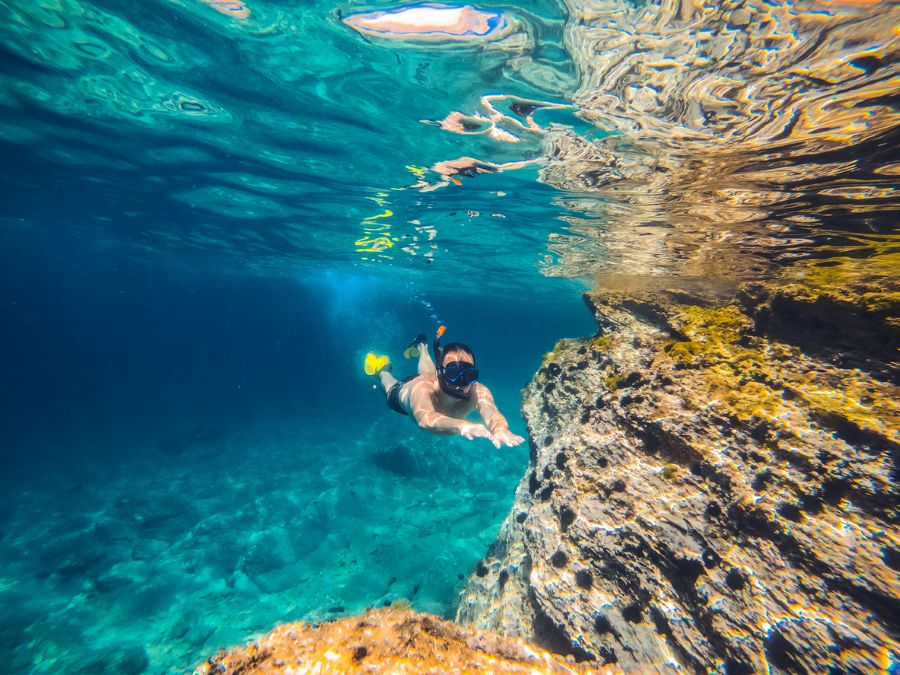
The Path of the Gods ranks among Italy’s most spectacular hiking trails. This ancient route provides breathtaking views of the entire Amalfi Coast.
Boat excursions let visitors explore sea caves and secret swimming spots along both coastlines. Many tours include stops for snorkeling in pristine waters.
Sea kayaking reveals hidden beaches and dramatic cliff formations. Paddlers can explore at their own pace while spotting local marine life.
Rock climbing attracts adventurers to both locations, with routes suitable for various skill levels.
Accommodations and Hospitality
Both Positano and Capri offer amazing places to stay, from fancy cliffside hotels to cozy family-run spots. The two destinations shine in different ways when it comes to places to rest your head.
Luxury Stays and Services
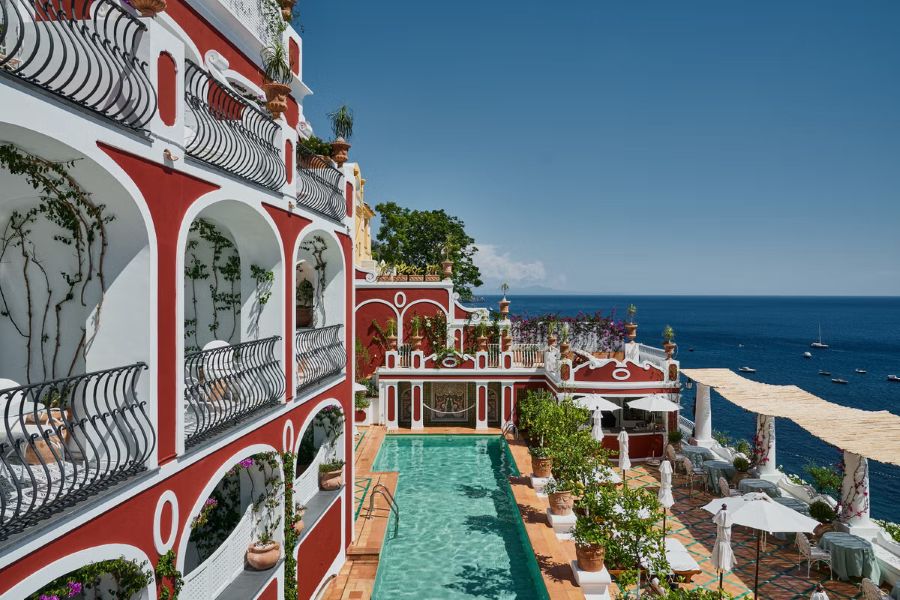
Le Sirenuse in Positano stands out as one of Italy’s most stunning five-star hotels. The hotel features a Michelin-starred restaurant and rooms with private balconies overlooking the sea.
Capri matches this luxury with its own high-end spots concentrated around Marina Grande. Many rooms come with private infinity pools and butler service.
The staff at luxury hotels in both places speak multiple languages and can arrange private boat tours, cooking classes, or helicopter transfers.
Boutique Hotels and Local Charm
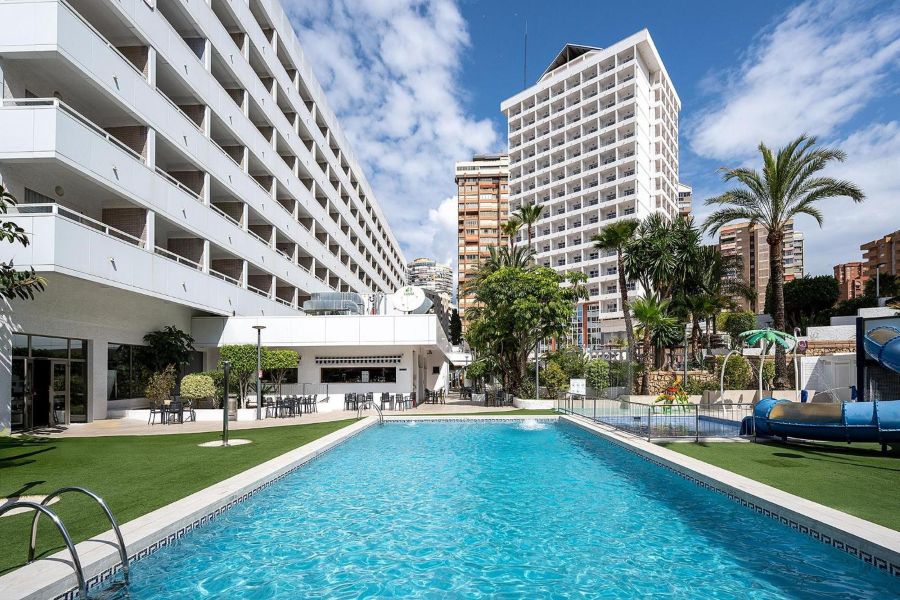
Hotel Poseidon sits in the heart of Positano, showing off family-owned charm with amazing views. The rooms mix modern comforts with local art and furniture.
Capri’s boutique hotels often hide in quiet spots away from crowds. These smaller properties give guests a more personal touch, with owners sharing tips about secret beach spots and local restaurants.
Many boutique spots in both places serve fresh breakfast with local pastries and fruits on sunny terraces each morning.
Budget-Friendly Options

Positano has more budget choices than Capri. Small B&Bs and guesthouses sit higher up the hill, trading fancy amenities for better prices and amazing views.
Capri’s cheaper stays are harder to find but exist inland from the main tourist areas. Some family-run properties offer basic but clean rooms with shared terraces.
Both places have rental rooms in local homes, giving visitors a chance to live like a local for less money.
Culinary Delights and Dining Experiences
Both Capri and Positano offer amazing Mediterranean food scenes with fresh seafood, local ingredients, and stunning coastal views. The restaurants blend traditional Italian cooking with modern techniques while highlighting regional specialties.
Capri’s Famous Restaurants
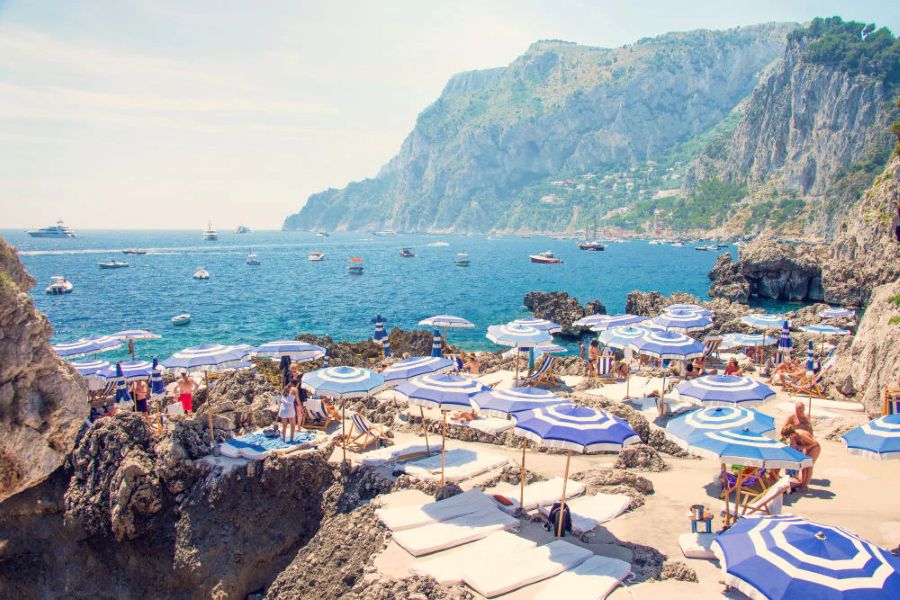
La Fontelina stands out as one of Capri’s most iconic dining spots, perched on a cliff overlooking the Faraglioni rocks. The restaurant serves fresh catch-of-the-day seafood and local specialties like spaghetti alle vongole.
Restaurant Il Riccio earned a Michelin star for its creative seafood dishes and spectacular Blue Grotto views. The raw bar features just-caught fish and shellfish displayed on beds of ice.
Many restaurants source ingredients from small local farms that benefit from Capri’s unique microclimate. The island’s citrus groves provide lemons for limoncello and seafood dishes.
Positano’s Food Scene

Family-run trattorias line Positano’s steep streets, serving generations-old recipes. Many spots offer outdoor terraces with stunning views of the colorful hillside houses and Mediterranean Sea.
The town excels at casual dining with excellent pizzerias using wood-fired ovens. Local specialties include fresh pasta with seafood, grilled fish, and buffalo mozzarella from nearby farms.
Beach clubs and hotels host upscale restaurants that blend traditional flavors with modern presentation. Chefs emphasize regional ingredients like San Marzano tomatoes, Amalfi lemons, and local olive oils.
Seafood is a menu highlight, from simple grilled fish to elaborate crudo platters. Many restaurants work directly with local fishing boats to serve the daily catch.
Shopping and Leisure
Capri and Positano offer two distinct shopping experiences – from high-end designer boutiques to charming local artisan shops. Each destination reflects its unique character through its retail offerings.
Exclusive Boutiques in Capri
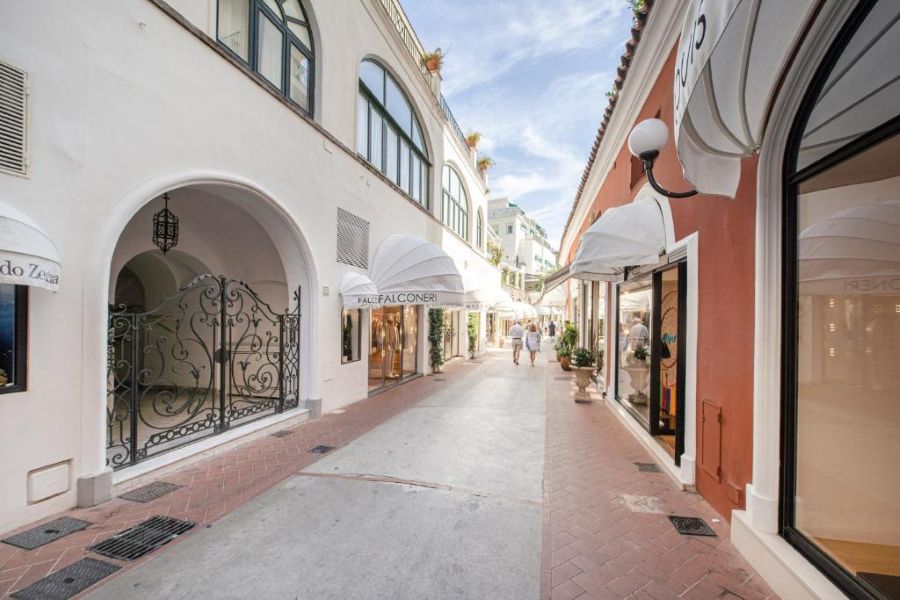
Via Camerelle stands as Capri’s premier shopping street, lined with luxurious designer stores. The glamorous avenue features flagship stores from Gucci, Prada, and Louis Vuitton.
Local artisans display handcrafted leather sandals in small workshops, where skilled craftsmen create custom-fitted footwear on the spot.
The famous Capri Watch boutiques showcase unique timepieces that make perfect souvenirs. Many shops around the Piazzetta sell local products like limoncello and handmade ceramics.
Positano’s Bohemian Shops

Positano’s narrow streets burst with colorful boutiques selling breezy linen clothing and handmade goods. The town is famous for its Moda Positano – a casual-chic fashion style featuring flowing dresses and beachwear.
Local artists display their work in small galleries tucked between cafes. Ceramic shops offer hand-painted plates and tiles in bright Mediterranean colors.
The main shopping area near Via dei Mulini specializes in leather sandals, locally-made perfumes, and resort wear.
Nightlife and Entertainment
When night falls, both destinations come alive with distinct personalities. Capri radiates glamour and sophistication, while Positano offers a more laid-back coastal charm.
Glamorous Nights in Capri

The famous Piazzetta is the heart of Capri’s nightlife. This small square transforms into a buzzing social hub as the sun sets. Well-dressed visitors and locals gather at chic cocktail bars and lounges that surround the square.
Many of Capri’s luxury hotels host exclusive evening events. Upscale piano bars fill the air with live music, and guests sip crafted cocktails and champagne.
The island’s nightclubs attract a mix of celebrities and jet-setters. Most venues stay open until the early morning hours, though they can be quite expensive.
Positano’s Evening Charm

Positano takes a more relaxed approach to nightlife. Music On The Rocks stands out as the town’s premier nightclub, built into the cliffside with stunning views of the coast.
The streets come alive with cozy wine bars and restaurants that often feature local musicians. Many spots offer outdoor seating where you can enjoy drinks while watching the sunset over the Mediterranean.
Beach bars dot the shoreline, creating perfect spots for casual evening drinks. The atmosphere stays warm and inviting, with most venues focusing on good conversation and Italian hospitality rather than flashy entertainment.
Frequently Asked Questions
Seaside charm, dining experiences, and accessibility create distinct differences between these two iconic destinations. Each offers unique attractions and memorable adventures for travelers.
What are the key differences between visiting Positano and Capri for a day trip?
What are the key differences between visiting Positano and Capri for a day trip?
Positano sits along the mainland coast with steep streets and colorful buildings climbing up from the beach. You’ll get around mainly on foot through winding pathways and stairs.
Capri is an island divided into two towns – Capri and Anacapri. It spans just 10 square kilometers with four main roads connecting key spots.
Getting to Positano requires a 90-minute journey from Naples by car or ferry. Capri needs a boat ride, making timing more dependent on ferry schedules.
Positano tends to feel more laid-back and residential, with local families running small shops and restaurants away from the main beach area.
Hidden churches, family vineyards, and lesser-known hiking trails dot the hills above Positano’s center.
Capri’s authentic spots hide in Anacapri, where you’ll find traditional crafts and quiet garden restaurants far from designer boutiques.
Can Positano and Capri both be thoroughly enjoyed during a single day excursion?
Trying to visit both places in one day limits your experience significantly. Travel time between locations eats up several hours.
Pick one destination to explore properly. This gives time to wander side streets, stop for proper meals, and see major sights without rushing.
What unique attractions should one prioritize when deciding between a visit to Positano or Capri?
Positano’s must-sees include the Museo Archeologico Romano and the iconic beach views from the Path of the Gods hiking trail.
Capri offers the Blue Grotto sea cave, Villa Jovis ruins, and Mount Solaro’s peak with its chairlift ride and panoramic views.
How do the culinary experiences in Positano compare with those available in Capri for food enthusiasts?
Positano excels in fresh seafood caught daily and served in family-run trattorias. Local specialties include delizia al limone dessert.
Capri’s food scene mixes high-end dining with simple spots serving ravioli caprese and locally-made limoncello.
What travel considerations should visitors with limited mobility take into account when choosing between Positano and Capri?
Positano presents challenges with its steep staircases and limited vehicle access. Many restaurants and shops require climbing steps.
Capri offers more options for those with mobility issues. Funiculars and buses connect major points, though some attractions still need walking.
The island’s main towns have flatter areas with easier navigation than Positano’s vertical layout.
